
IEEE TRANSACTIONS ON DEVICE AND MATERIALS RELIABILITY
Scope & Guideline
Advancing Knowledge: The Nexus of Device Performance and Material Science.
Introduction
Aims and Scopes
- Device Reliability Assessment:
The journal emphasizes methodologies for assessing the reliability of various electronic devices, including semiconductors and integrated circuits, under different operational and environmental conditions. - Material Reliability and Aging:
Research on the aging mechanisms and reliability of materials used in electronic devices, including dielectrics, metals, and semiconductors, is a core focus. - Failure Mechanisms and Modeling:
The journal includes studies on identifying and modeling failure mechanisms in electronic devices, such as hot carrier degradation, time-dependent dielectric breakdown (TDDB), and thermal effects. - Innovative Reliability Enhancement Techniques:
Papers often present innovative techniques and technologies aimed at improving the reliability of devices, including design modifications and new material applications. - Impact of Environmental Factors:
Research exploring the impact of environmental factors such as radiation, temperature, and humidity on device reliability is a critical area of focus. - Advanced Testing and Characterization Methods:
The journal publishes work on new testing methods and characterization techniques that provide insights into the reliability and performance of devices.
Trending and Emerging
- Advanced Semiconductor Technologies:
There is a growing focus on the reliability of advanced semiconductor technologies, such as GaN and SiC devices, which are essential for high-performance applications. - Machine Learning and AI in Reliability Prediction:
The integration of machine learning and artificial intelligence for predictive modeling and reliability assessment is an emerging theme, reflecting the industry's shift towards data-driven approaches. - Flexible and Wearable Electronics:
Research on the reliability of flexible and wearable electronics is gaining traction, driven by the demand for innovative applications in consumer electronics and medical devices. - 3D Integration and Packaging Reliability:
As 3D integration techniques become more prevalent, studies addressing the reliability challenges associated with these advanced packaging methods are increasingly important. - Environmental and Radiation Effects:
Research examining the impact of environmental factors and radiation on device performance and reliability is trending, especially in applications related to space and military technologies. - Sustainability and Eco-Friendly Materials:
An emerging theme involves the exploration of sustainable and eco-friendly materials in device fabrication, focusing on their reliability and performance.
Declining or Waning
- Traditional Reliability Testing:
There has been a noticeable decrease in papers focused solely on traditional reliability testing methods, as newer and more sophisticated testing techniques gain prominence. - Basic Device Characterization:
Research centered on basic characterization of devices without a strong emphasis on reliability implications is less frequent, as the field moves towards more application-oriented studies. - Lower Technology Node Devices:
As the focus shifts towards advanced materials and devices, there is a decline in studies specifically targeting lower technology nodes, which were once a major area of interest. - Generalized Failure Analysis:
Papers providing generalized failure analysis without specific context or application to current technologies have become less common, as more targeted studies emerge.
Similar Journals

Transactions on Electrical and Electronic Materials
Unveiling Insights in the World of Advanced MaterialsTransactions on Electrical and Electronic Materials, published by Springer, is a distinguished journal aimed at advancing the fields of electrical and electronic engineering, as well as electronic, optical, and magnetic materials. With an ISSN of 1229-7607 and an E-ISSN of 2092-7592, this journal is vital in disseminating impactful research and innovations, providing insights and significant findings that cater to both academia and industry. Holding a Q3 ranking in the categories of Electrical and Electronic Engineering and Electronic, Optical and Magnetic Materials, it serves as a reputable platform for sharing research that influences ongoing developments in these critical areas. The journal's converged years from 2011 to 2024 signify its commitment to providing a comprehensive review of technological advancements. Located in New York City, it appeals to a global audience of researchers, professionals, and students, enhancing their understanding of current trends and practices within the domain.

Journal of Semiconductor Technology and Science
Transforming Ideas into Semiconductor SolutionsThe Journal of Semiconductor Technology and Science, published by the IEEK PUBLICATION CENTER, serves as a vital platform for advancing the field of semiconductor technology and materials science. With its ISSN 1598-1657 and E-ISSN 2233-4866, this journal has been pivotal since its inception in 2005, continuing to shed light on innovative research until 2024. Although currently classified in the Q4 category for both Electrical and Electronic Engineering and Electronic, Optical and Magnetic Materials, it remains a crucial resource for those in industry and academia alike, providing in-depth analyses and findings that explore the complexities of semiconductor applications. Researchers and professionals will find value in its comprehensive articles that address current trends and future directions in semiconductor technologies. This open-access journal, published in South Korea, is positioned to foster collaboration among students, professionals, and leading researchers in the ever-evolving technology landscape.

Journal of Reliability and Statistical Studies
Transforming Data into Reliable InsightsJournal of Reliability and Statistical Studies, published by RIVER PUBLISHERS, is a vital resource for researchers and professionals engaged in the fields of analysis, statistics, and numerical methods. With an ISSN of 0974-8024 and E-ISSN 2229-5666, this journal has carved a niche since its inception, converging from 2019 to 2024 to deliver cutting-edge research. The journal is recognized in the academic community, demonstrated by its rankings in Scopus: Mathematics (Analysis: Rank #108/193, Percentile 44; Statistics and Probability: Rank #170/278, Percentile 39; Numerical Analysis: Rank #58/88, Percentile 34). Despite being categorized as Q4 in its field for 2023, it aims to cultivate a robust platform for innovative studies that push the boundaries of reliability and statistical methodologies. Researchers will find value in its commitment to disseminating both theoretical and practical advancements, making it an essential journal for students and scholars striving for excellence in statistical analysis and reliability engineering.
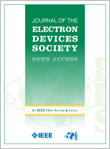
IEEE Journal of the Electron Devices Society
Illuminating the Path of Electron Device InnovationIEEE Journal of the Electron Devices Society is a premier open-access publication dedicated to the advancement of knowledge in the field of electron devices. Published by the IEEE Institute of Electrical and Electronics Engineers Inc, this journal has been contributing essential research to the scientific community since 2013, reflecting its commitment to fostering innovation and development in the industry. With a notable impact factor that places it in reputable category quartiles—Q3 in Biotechnology and Q2 in both Electrical and Electronic Engineering and Electronic, Optical, and Magnetic Materials—this journal stands as a respected outlet for cutting-edge studies. Positioned among the top-ranked journals in its respective categories, including a Scopus rank of #90 in Electronic, Optical and Magnetic Materials, it serves as a vital resource for researchers, professionals, and students alike. The open-access model enhances the journal's accessibility, allowing for widespread dissemination of crucial findings and innovations in electron device technologies. Whether you are engaged in academia or industry, the IEEE Journal of the Electron Devices Society is essential for remaining at the forefront of advancements in this dynamic field.
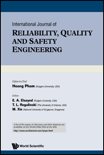
International Journal of Reliability Quality and Safety Engineering
Championing Reliability and Safety in Engineering DisciplinesThe International Journal of Reliability Quality and Safety Engineering, published by World Scientific Publishing Co Pte Ltd, is a leading platform for disseminating cutting-edge research in the fields of reliability, quality, and safety engineering. With an impressive scope that spans across aerospace, electrical engineering, nuclear energy, and industrial manufacturing, this journal serves as a critical resource for researchers and professionals aiming to enhance system dependability and operational excellence. Indexed in Scopus, it holds a respectable Q3 ranking across various categories in 2023, reflecting its growing influence in the academic community. Although currently not open access, it provides ample opportunities for scholars to publish impactful studies from its extensive database, which has evolved since 1996. The journal's commitment to advancing knowledge in reliability and safety engineering makes it a pivotal resource for those dedicated to improving engineering practices and protocols worldwide.

QUALITY AND RELIABILITY ENGINEERING INTERNATIONAL
Transforming Challenges into Reliable SolutionsQUALITY AND RELIABILITY ENGINEERING INTERNATIONAL is a prestigious journal published by WILEY, dedicated to advancing the fields of quality, reliability, and engineering. With an ISSN of 0748-8017 and an E-ISSN of 1099-1638, this journal provides a platform for scholarly articles that delve into the intricacies of management science, operations research, safety, risk, reliability, and quality, as evidenced by its strong ranking in the Q2 category for both Management Science and Operations Research, as well as Safety, Risk, Reliability, and Quality. Established in 1985 and continuing through 2024, the journal has garnered a solid reputation in the academic community, achieving a Scopus ranking in the 70th and 64th percentiles for its respective categories. Although it does not offer open access, its authoritative content is essential for researchers, professionals, and students seeking to deepen their understanding of quality and reliability principles. With its UK-based publishing address ensuring global reach, this journal remains at the forefront of discussions surrounding engineering quality and reliability methodologies.
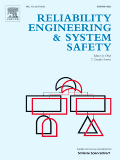
RELIABILITY ENGINEERING & SYSTEM SAFETY
Transforming Knowledge into Reliable Engineering Practices.RELIABILITY ENGINEERING & SYSTEM SAFETY is a leading interdisciplinary journal published by Elsevier Sci Ltd, dedicated to advancing knowledge in the fields of applied mathematics, industrial and manufacturing engineering, and safety, risk, reliability, and quality. With a significant presence since its inception in 1983, this esteemed journal, identifiable by ISSN 0951-8320 and E-ISSN 1879-0836, holds an impressive impact factor and ranks in the top quartile (Q1) of its categories according to the most recent metrics. Specifically, it has achieved remarkable standings in Scopus, ranking #3 out of 207 in Safety, Risk, Reliability and Quality, marking it in the 98th percentile, and #21 out of 384 in Industrial and Manufacturing Engineering, at the 94th percentile. This distinction underscores the journal's vital role in shaping research and innovation in its fields. While it does not operate under an open access model, RELIABILITY ENGINEERING & SYSTEM SAFETY remains an essential resource for researchers, professionals, and students, aiming to publish high-quality articles that facilitate the understanding and application of reliability engineering and systemic safety within various industrial contexts. Stay ahead in cutting-edge research by engaging with the latest articles and findings from this influential journal.
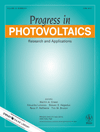
PROGRESS IN PHOTOVOLTAICS
Empowering Research in Renewable Energy TechnologiesPROGRESS IN PHOTOVOLTAICS, published by Wiley, is a leading scholarly journal dedicated to the advancement of photovoltaic technology and its applications. Since its inception in 1993, this journal has maintained a strong focus on the latest developments in solar energy, addressing both theoretical and practical aspects of photovoltaic systems. With an impressive impact factor and consistently ranked in the Q1 quartile across four key categories—Condensed Matter Physics, Electrical and Electronic Engineering, Electronic, Optical and Magnetic Materials, and Renewable Energy, Sustainability, and the Environment—PROGRESS IN PHOTOVOLTAICS is regarded as a pillar of scholarly excellence. The journal is essential for researchers, professionals, and students who seek to stay at the forefront of innovations and sustainability in the energy sector. Although it does not primarily offer open access, its commitment to advancing the understanding of photovoltaic technologies ensures that readers can expect high-quality, peer-reviewed research that pushes the boundaries of current knowledge.
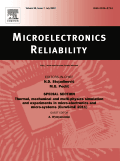
MICROELECTRONICS RELIABILITY
Unveiling Insights for a Reliable Technological FutureMICROELECTRONICS RELIABILITY, published by PERGAMON-ELSEVIER SCIENCE LTD, is a pivotal journal that serves the advancing field of microelectronics and materials reliability. With its ISSN 0026-2714 and E-ISSN 1872-941X, this journal has been at the forefront of disseminating research since its inception in 1962 and is set to continue exploring cutting-edge topics through 2024. The journal holds a respectable presence across several categories, achieving a Q3 ranking in areas such as Atomic and Molecular Physics and Electrical and Electronic Engineering, highlighting its broad interdisciplinary appeal, while also ranking in the Q2 category for Safety, Risk, Reliability, and Quality, which speaks to its commitment to ensuring standards in technological advancements. Access to this journal is subscription-based, making it an essential resource for researchers, professionals, and students seeking reliable information and data regarding electronic material performance and reliability assessment. Located in Kidlington, Oxford, UK, MICROELECTRONICS RELIABILITY is dedicated to advancing the field and addressing the critical issues associated with the reliability of microelectronic devices, thereby supporting innovations that shape our technological future.
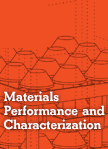
Materials Performance and Characterization
Pioneering Research in Metals, Polymers, and BeyondMaterials Performance and Characterization is a distinguished journal published by the American Society for Testing and Materials (ASTM), specializing in the field of materials science. With ISSN 2379-1365 and E-ISSN 2165-3992, this journal serves as a pivotal platform for disseminating innovative research in the areas of metals and alloys, polymers and plastics, ceramics and composites, and mechanics of materials. Established in 2012, it continues to feature peer-reviewed articles that contribute to both theoretical advancements and practical applications, emphasizing the importance of materials performance in various industries. Despite its current Q4 and Q3 rankings across categories as of 2023, the journal is committed to enhancing its influence in the materials science community, fostering engagement among researchers, professionals, and students alike. The journal is essential for anyone seeking to stay at the forefront of materials research and characterization.